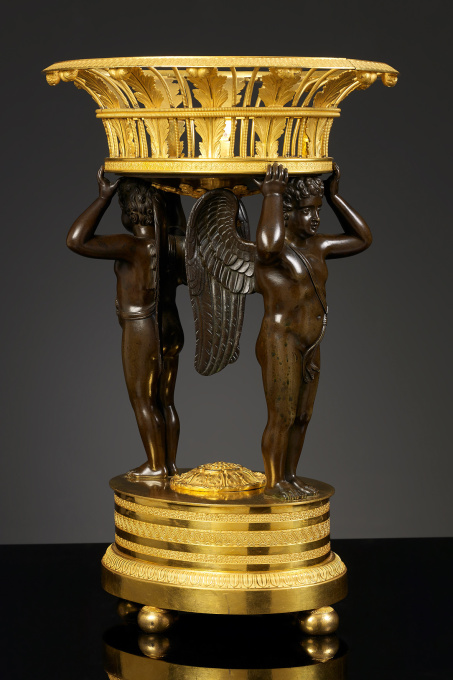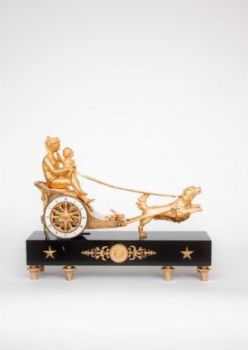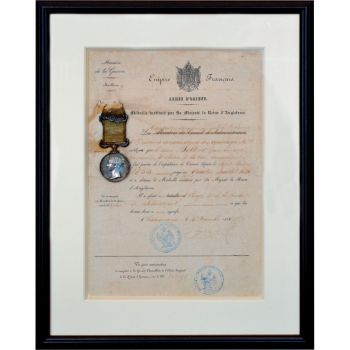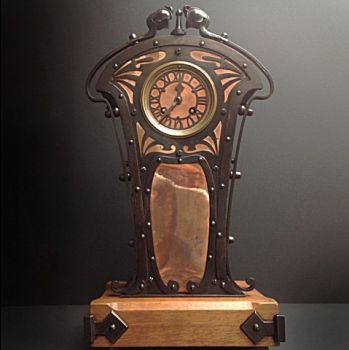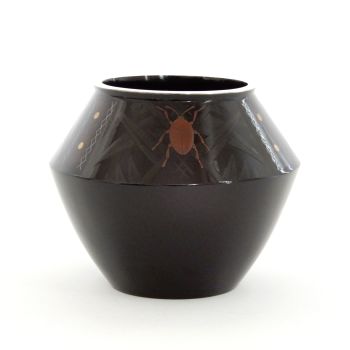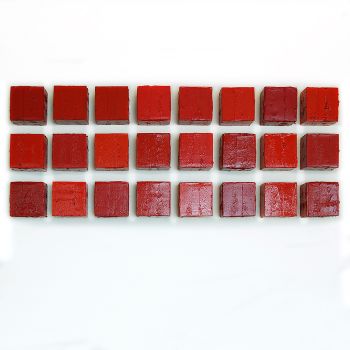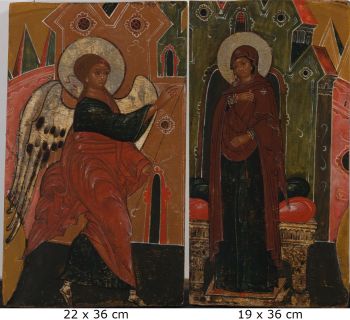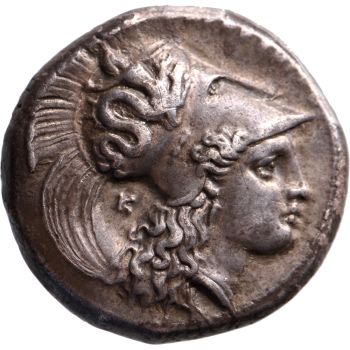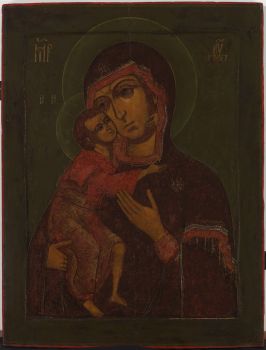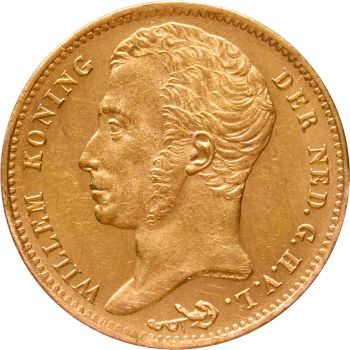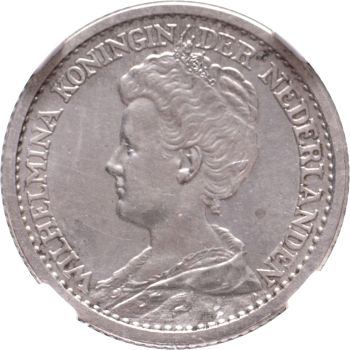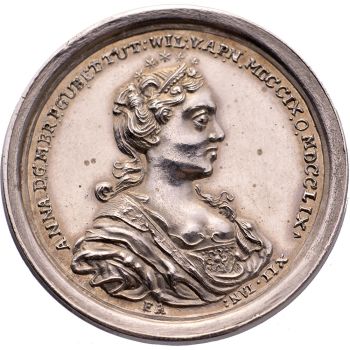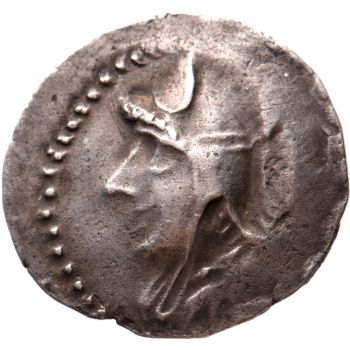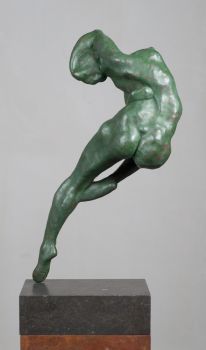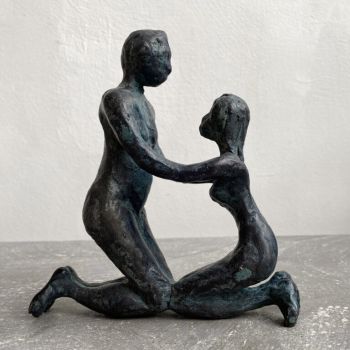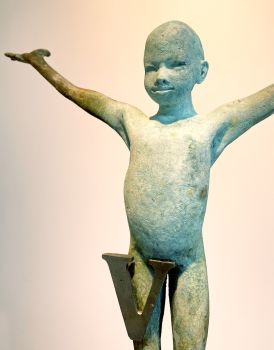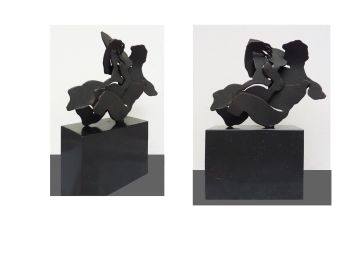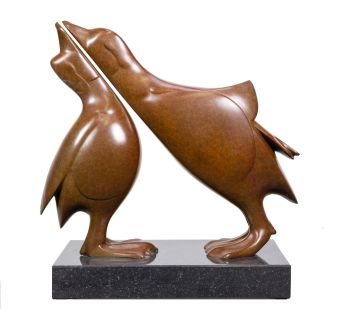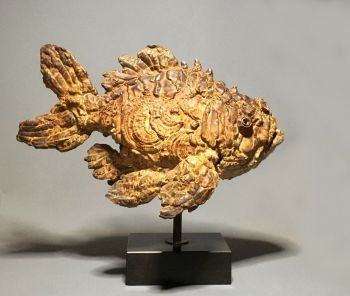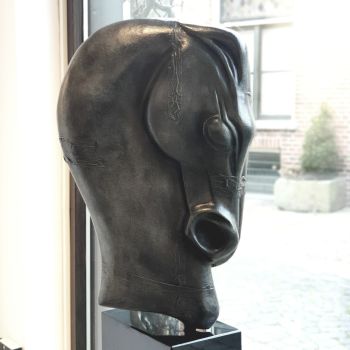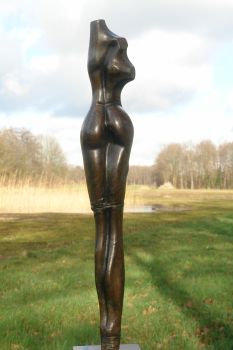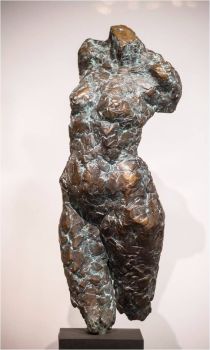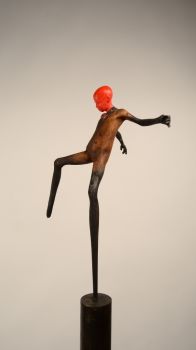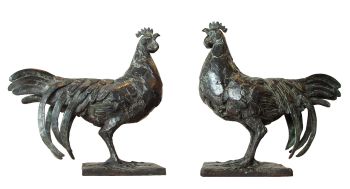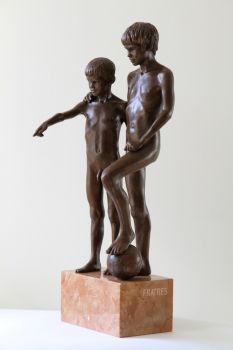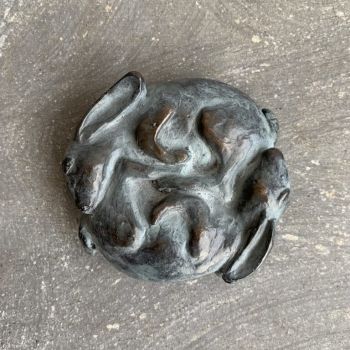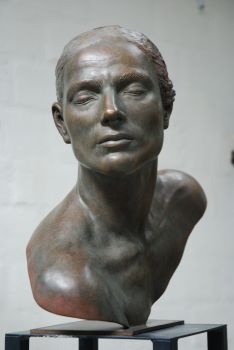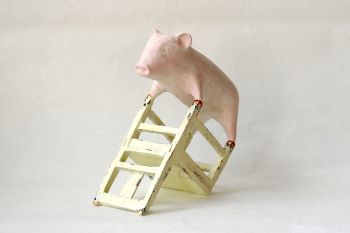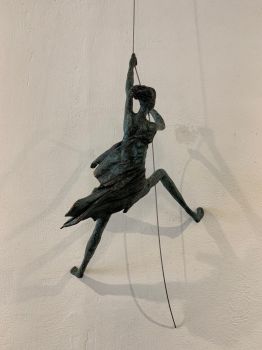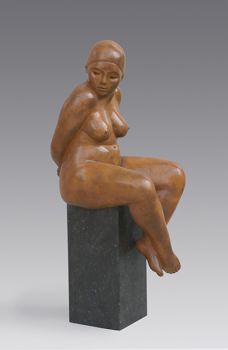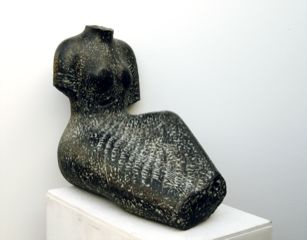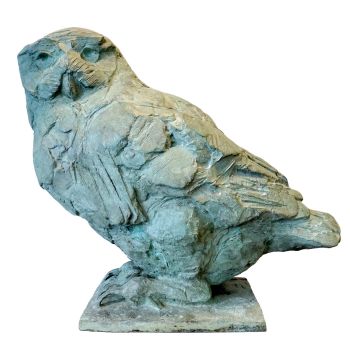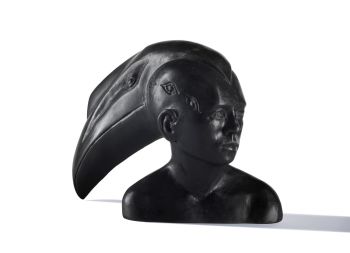A large Empire Center Piece, Paris 1810
Artista Sconosciuto
BronzoMetallo
48 ⨯ 33 ⨯ 27 cm
Attualmente non disponibile tramite Gallerease
- A proposito di opere d'arteA very large center piece in gilt and patinated bronze consisting of two patinated bronze putti on a oval shaped gilt bronze plinth on four oblate feet. The top of the plinth is decorated with a rosette of stylized acanthus leaves and a pommegranate centre. The putti carry an open work oval basket with stylized palmets and rope-shaped bars. The upper and lower rim are decorated with stylized floral motif. The underside of the basket consists of a patinated bronze plaque ornamented with gilt bronze palmettes and a glyphed boss decorated with leaves.
This magnificent centrepiece was almost certainly made as part of a ‘surtout de table’, an elaborate dining service, which in the early nineteenth century was displayed on a long mirrored plateau in the centre of a large dining table. This type of service was developed in France during the reign of Napoleon’s rule and in the wake of his various conquests was soon adopted throughout Europe. Pierre-Philippe Thomire (1751-1843), who was elected ciseleur de l’Empereur in 1809 in recognition of his service to Napoleon, created some of the very finest and most lavish surtouts for the Emperor and members of his Imperial court.
The centrepiece was intended to hold flowers or possibly fruit or sweets. A typical complete surtout de table may have comprised 24 and even 59 pieces which would probably have included smaller flanking centrepieces, tiered bon-bon dishes and sweetmeat plates, fruit baskets, possibly vases and accompanying candelabra placed on both the mirrored plateau and around its sides. While some remain as complete sets many have inevitably been separated, not least due to the practicalities of smaller dining tables. Despite separation, individual pieces are still very highly prized. - A proposito di opere artista
Può succedere che un artista o un creatore sia sconosciuto.
Alcune opere non sono determinate da chi sono state realizzate o sono state realizzate da (un gruppo di) artigiani. Esempi sono statue dell'antichità, mobili, specchi o firme non chiare o leggibili ma anche alcune opere non sono affatto firmate.
Inoltre puoi trovare la seguente descrizione:
•"Attribuito a …." A loro avviso probabilmente opera dell'artista, almeno in parte
•“Studio di ….” o “Officina di” A loro avviso un'opera eseguita nello studio o nella bottega dell'artista, eventualmente sotto la sua supervisione
•“Cerchio di…” A loro avviso un'opera del periodo dell'artista che mostra la sua influenza, strettamente legata all'artista ma non necessariamente al suo allievo
•"Stile di..." o "Seguace di..." A loro avviso un'opera eseguita nello stile dell'artista ma non necessariamente da un allievo; può essere contemporaneo o quasi contemporaneo
•“Modalità di…” A loro avviso un'opera nello stile dell'artista ma di epoca successiva
•"Dopo …." A loro avviso una copia (di qualsiasi data) di un'opera dell'artista
•“Firmato…”, “Datato…” o “Iscritto” A loro avviso l'opera è stata firmata/datata/inscritta dall'artista. L'aggiunta di un punto interrogativo indica un elemento di dubbio
•"Con firma....", "Con data...", "Con iscrizione..." o “Riporta firma/data/iscrizione” a loro avviso la firma/data/iscrizione è stata aggiunta da qualcuno diverso dall'artista
Artwork details
Related artworks
- 1 - 4 / 12
Artista Sconosciuto
Braccialetto di diamanti del XVIII secolo con intagli di 2000 anni1790
€ 23.000Adin Fine Antique Jewellery
 A cura di
A cura diDanny Bree
Artista Sconosciuto
Set Franse Empire Pendules / Empire Lectura penduleearly 19th
Prezzo su richiestaKuipers Kunst & Antiek
Artista Sconosciuto
Set of eight gouache drawings1799 - 1801
Prezzo su richiestaRobert Schreuder Antiquair
1 - 4 / 15Artista Sconosciuto
Japanese art deco lacquervase with Scarab beetle motif1920 - 1950
Prezzo su richiestaDille Art
Artista Sconosciuto
Icona monumentale in legno: San Nicola di Mozaisk1600 - 1650
Prezzo su richiestaKunsthandel H.W.C. Dullaert Icons
1 - 4 / 24- 1 - 4 / 24

